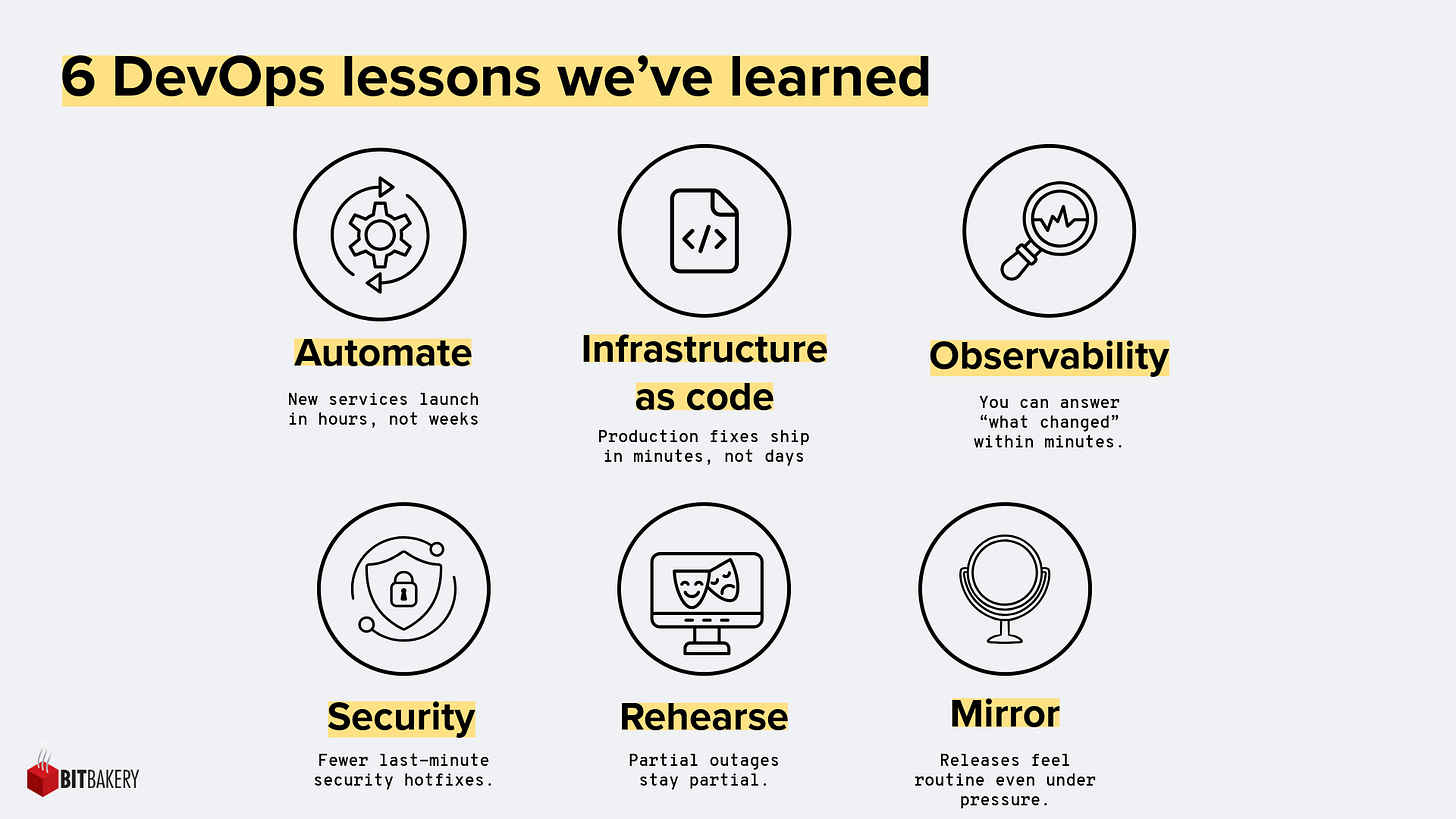Why we plan for failure
Your BitBakery update for September 2025
There aren’t many experiences quite like launching a new software solution. But when the confetti has been swept up, what happens after launch day?
Software issues don’t always show up on launch day. Sometimes, they can take weeks or months to appear. Most teams plan the build; fewer plan the care. If DevOps sounds like “future us will deal with it,” this one’s for you. We've put together a quick post on how we approach DevOps, highlighting six lessons that help keep releases calm and predictable.
Our model wraps support and maintenance into the software development lifecycle. That means clear SLAs, real incident playbooks, and post-mortems that actually drive changes in the next sprint. You get steady velocity without burning your people or your budget.
If you’re planning Q4 features or hardening for 2026, we can help you stand up CI/CD, observability, and incident workflows that stick. Hit reply and tell us what “success” looks like over the next 6–12 months, and we’ll map the path.
- Wes
AI corner: GPT-5 and open weights (what devs should know)
OpenAI shipped GPT-5 and new open-weight models (gpt-oss-120b/20b) last month. They’re both useful for teams that need control over infrastructure, data, and cost. We broke down where GPT-5 helps (reasoning, coding, agentic tasks) and when open weights make sense.
Waterloo Region tech headlines
Astrus announces $11 million CAD to automate semiconductor design with AI (BetaKit)
Bankruptcy docs claim faltering sales pipeline sunk Uvaro and Lighthouse Labs post acquisition (BetaKit)
Waterloo’s Plum earns top HR tech award (Communitech)
Friendlier’s total funding tops $10M with new $4.5M raise (Communitech)
Reimagining entrepreneurship through equity and inclusion (Accelerator Centre)
MIX Profile: Sydney Robinson, Co-founder and CEO of Vessl Prosthetics (Medical Innovation Xchange)




